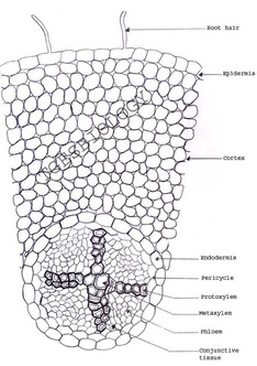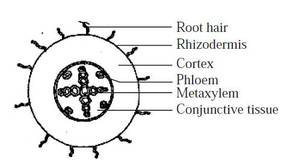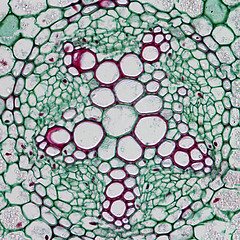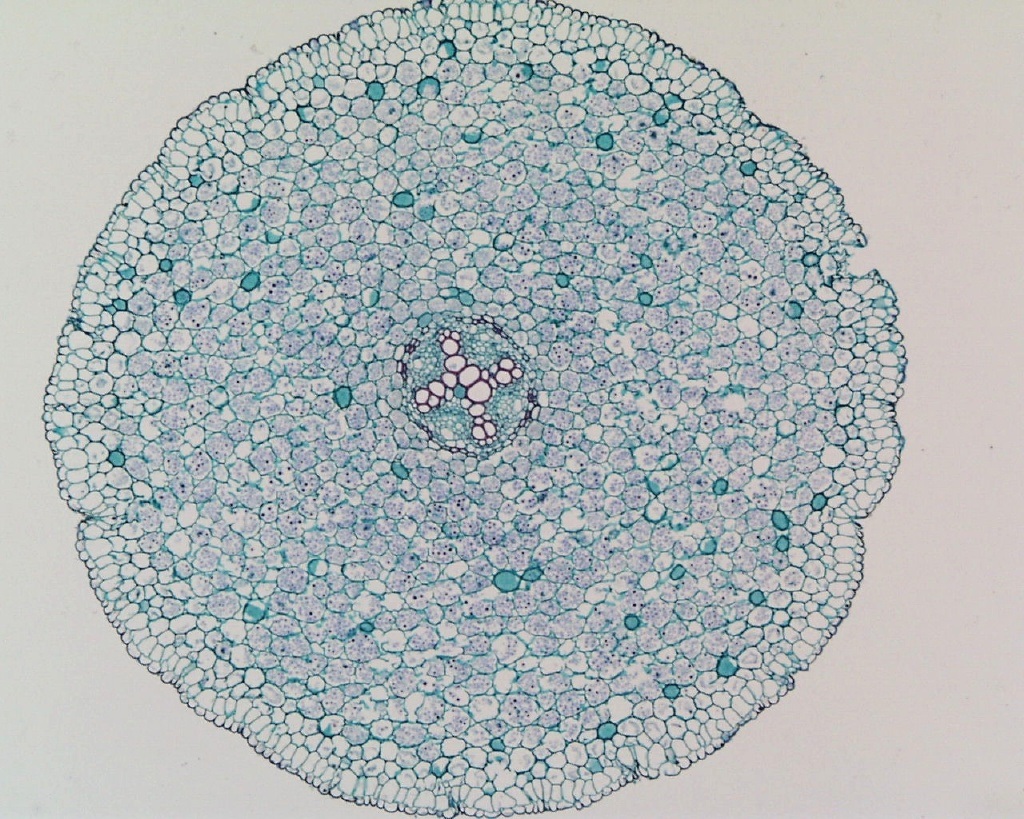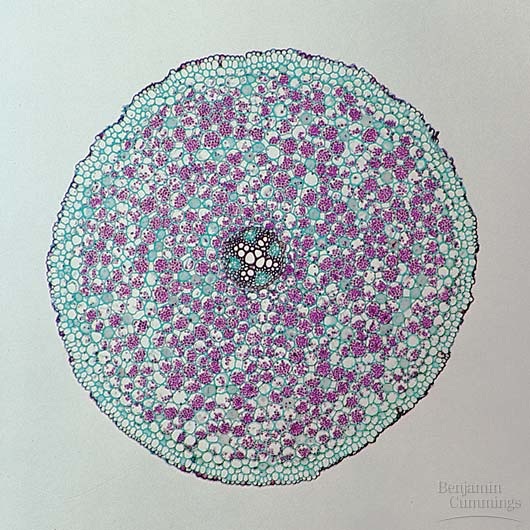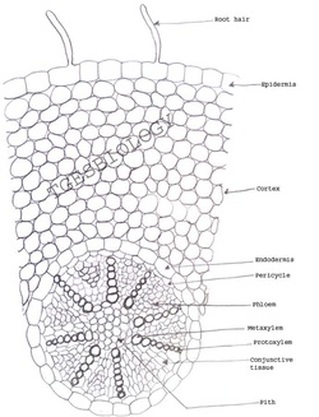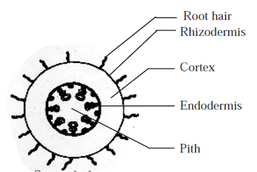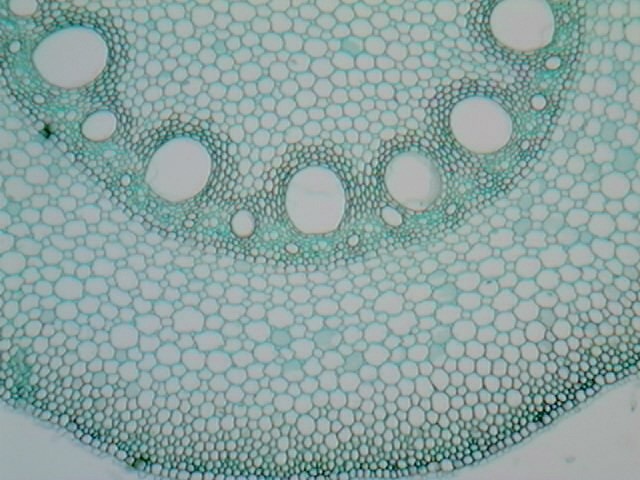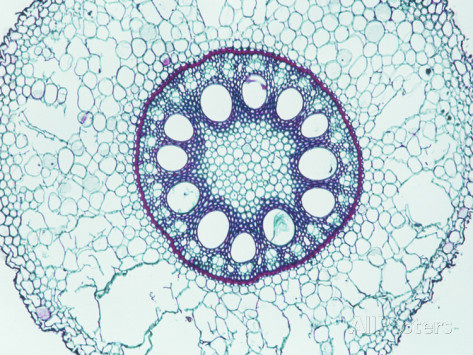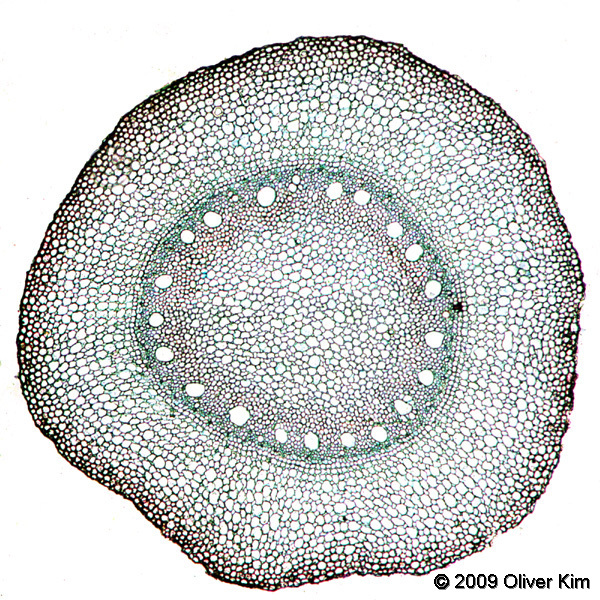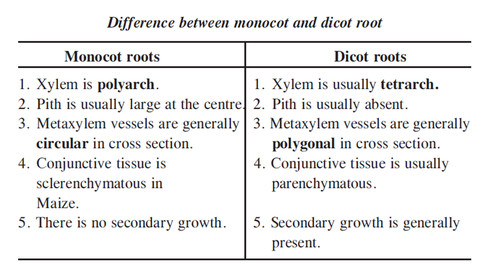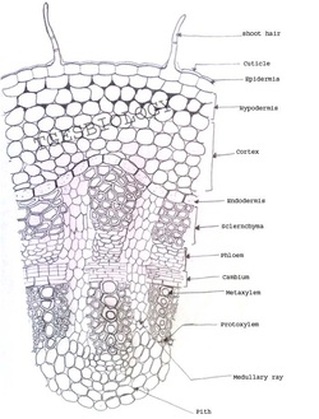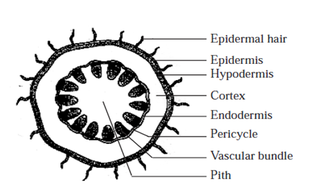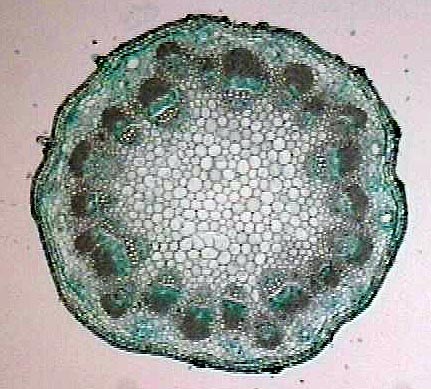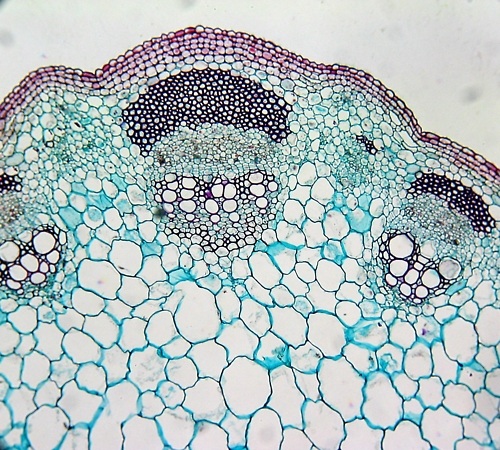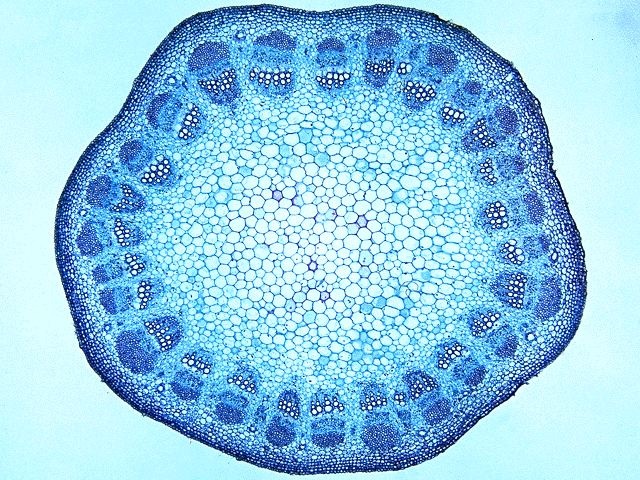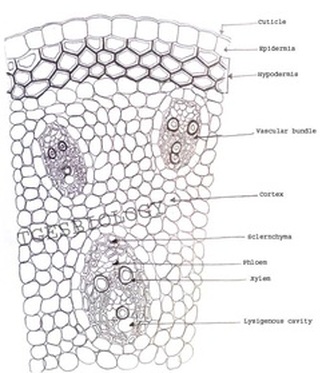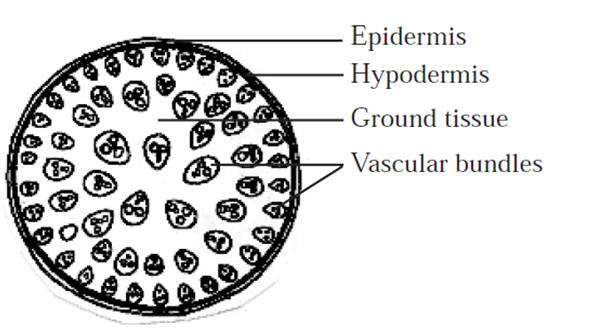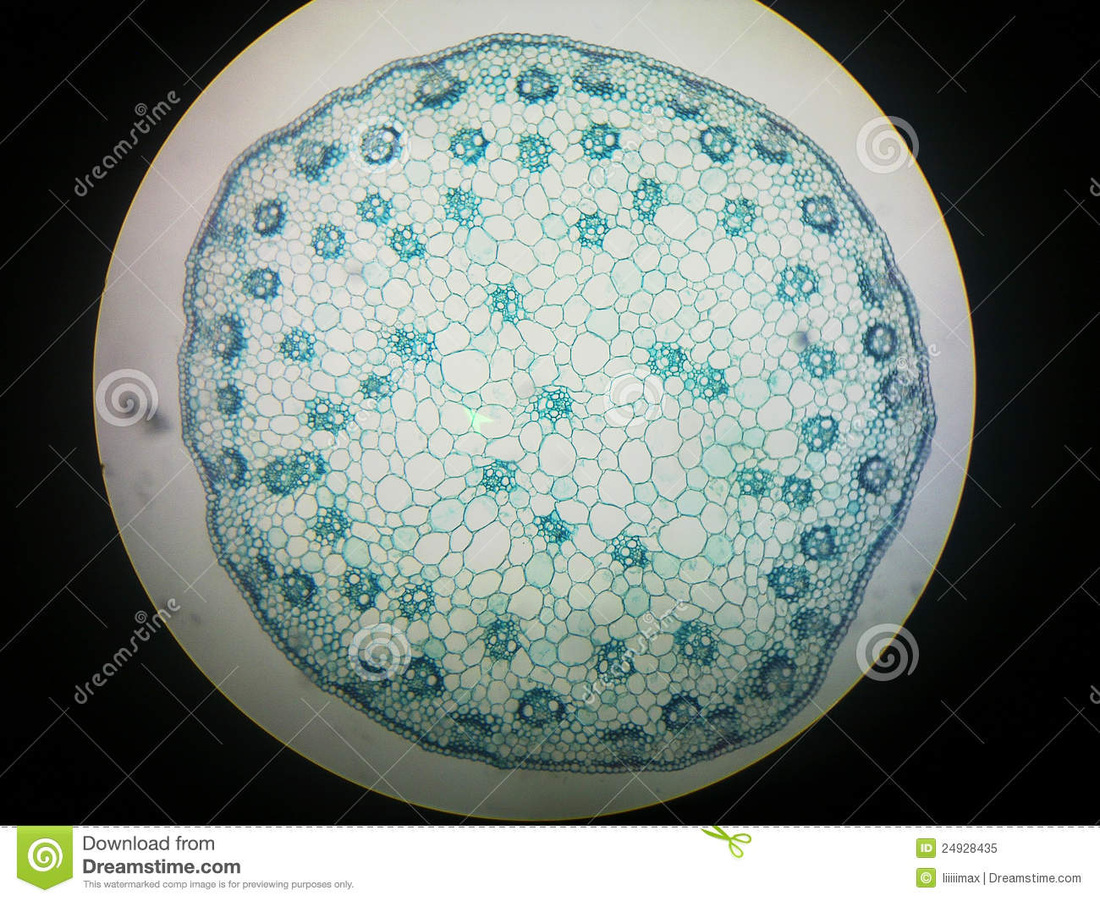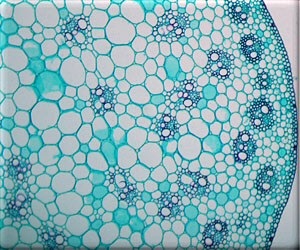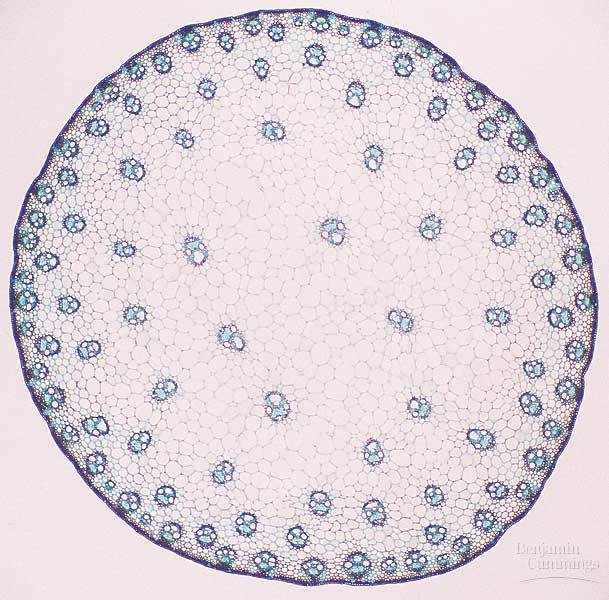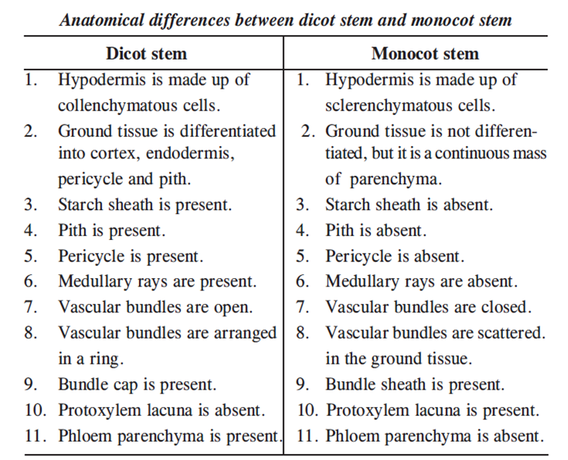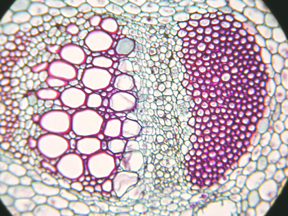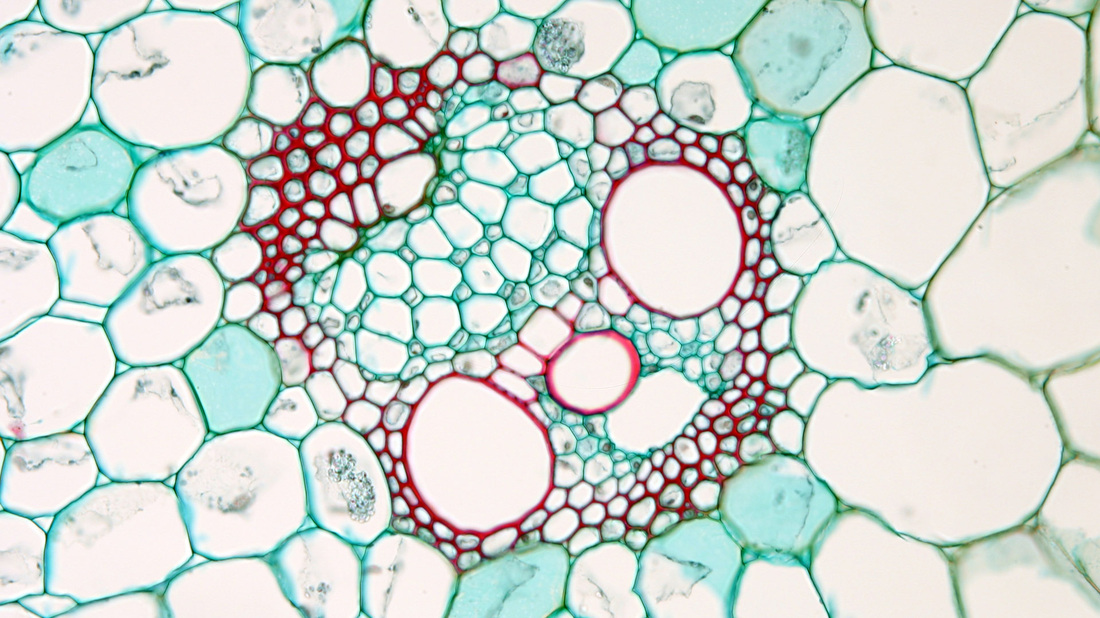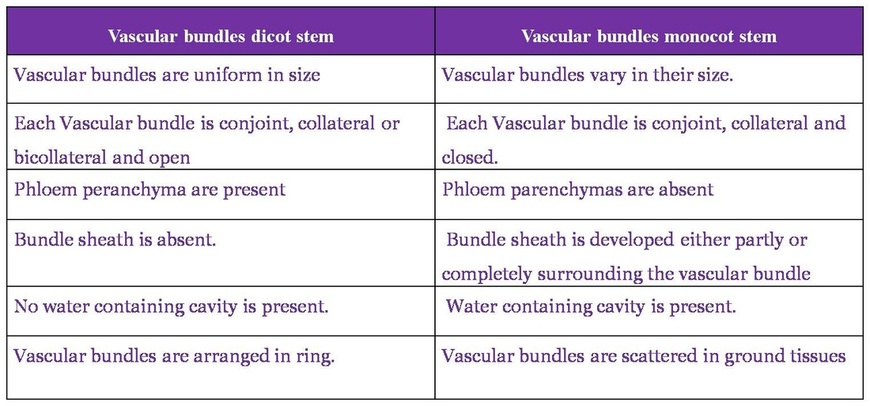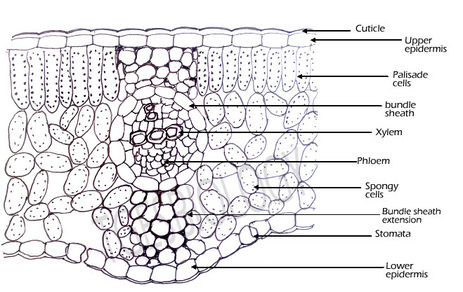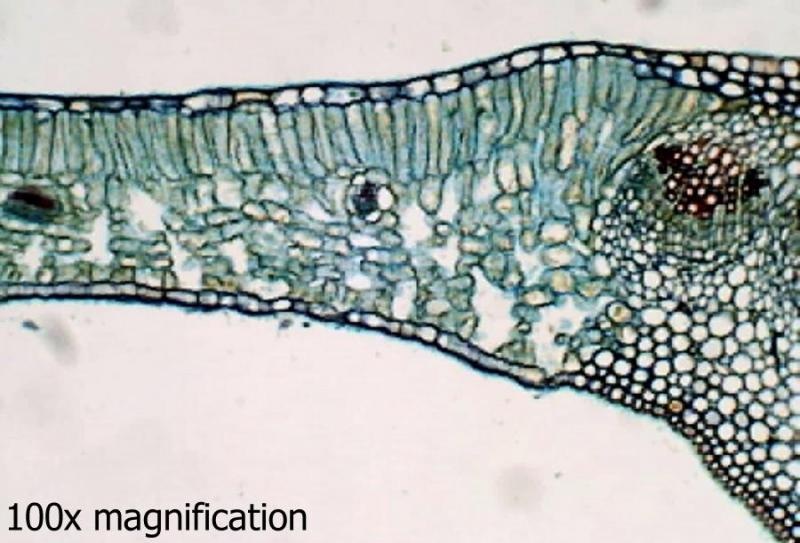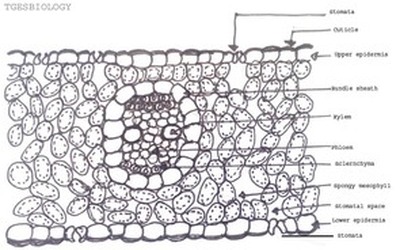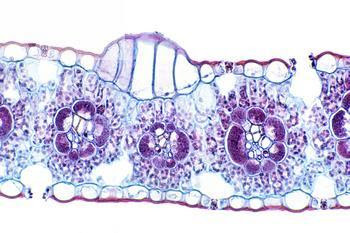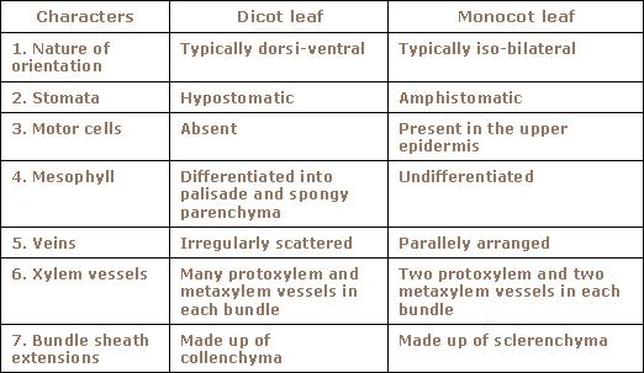ISC 12>MULTICELLULARITY IN PLANTS>1. PLANT ANATOMY>Anatomical differences
SCOPE OF SYLLABUS
- Anatomical differences between dicot and monocot root, stem and leaf must be taught for better understanding.
- Basic idea of how secondary growth takes place and formation of annual rings; structural and functional differences between heartwood and sapwood.(NEXT)
Click on the links below for plant tissues and secondary growth
Plant tissues (types of vascular bundles) Basic idea of secondary growth
1. ANATOMY OF DICOT ROOT
(PRIMARY GROWTH)
|
DRAW THE CELLULAR DIAGRAM
DRAW THE SCHEMATIC DIAGRAM |
Primary structure of dicot root
The transverse section of the dicot root shows the following plan of arrangement of tissues from the periphery to the centre.
A. Pericycle : Pericycle is generally a single layer of parenchymatous cells found inner to the endodermis. Lateral roots originate from the pericycle. B. Vascular system
|
Images of Dicot root
2. ANATOMY OF MONOCOT ROOT
Primary structure of monocotyledonous root - Maize root
1. Rhizodermis or epiblema
A. Pericycle : A single layer of parenchymatous cells found inner to the endodermis. Lateral roots originate from the pericycle. B. Vascular system
|
DRAW THE CELLULAR DIAGRAM
DRAW THE SCHEMATIC DIAGRAM |
Images of monocot root
3. ANATOMY OF DICOT STEM (PRIMARY GROWTH)
|
DRAW THE DIAGRAM
DRAW THE SCHEMATIC DIAGRAM |
Primary structure of dicotyledonous stem - Sunflower stem
1. Epidermis
|
Images for dicot stem
4. ANATOMY OF MONOCOT STEM
|
Primary structure of monocot stem - Maize stem 1. Epidermis
|
DRAW THE DIAGRAM
DRAW THE SCHEMATIC DIAGRAM |
Differences between monocot and dicot vascular bundles
5. ANATOMY OF DICOT LEAF (Dorsiventral leaf)
A transverse section through the mid rib region of a typical dorsiventral leaf reveals the following structure.
1. Epidermis
1. Epidermis
- Both upper and lower epidermis are usually made up of a single layer of cells that are closely packed.
- The cuticle on the upper epidermis is thicker than that of lower epidermis.
- Stomata are more in number on the lower epidermis than on the upper epidermis.
- The main function of the epidermis is to give protection to mesophyll. The cuticle helps to check transpiration. Stomata are used for transpiration and gas exchange.
- The entire tissue between the upper and lower epidermis is called the mesophyll, differentiated into palisade and spongy parenchyma.
- Below the epidermis, vertically elongated cylindrical cells in one or more layers without intercellular spaces form palisade parenchyma.
- Palisade parenchyma cells contain more chloroplasts than the spongy parenchyma cells. The function of palisade parenchyma is photosynthesis.
- Below palisade parenchyma towards lower epidermis, irregularly shaped, loosely arranged cells with numerous air spaces form spongy parenchyma.
- Spongy cells facilitate the exchange of gases with the help of air spaces.
- The air space that is found next to the stoma is called respiratorycavity or sub-stomatal cavity
- Vascular bundles are conjoint, collateral and closed. Xylem is present towards the upper epidermis, while the phloem towards the lower epidermis.
- Vascular bundles are surrounded by a compact layer of parenchymatous cells called bundle sheath or border parenchyma.
- Protoxylem vessels are present towards the upper epidermis.
- Phloem consists of sieve tubes, companion cells and phloem parenchyma. Phloem fibres are absent.
- Xylem consists of vessels and xylem parenchyma. Tracheids and xylem fibres are absent.
6. ANATOMY OF MONOCOT LEAF (Isobilateral leaf)
A transverse section passing through the midrib region of an iso-bilateral leaf (Maize) reveals the following structure.
1. Epidermis
1. Epidermis
- Both upper and lower epidermis are usually made up of a single layer of cells that are closely packed.
- Cuticle and trichomes are present in both the layers.
- Stomata are equal in number on both layers. This condition is described as amphistomatic.
- A few cells in the upper epidermis are enlarged to form motor cells called bulliform cells.Helps in rolling and unrolling.
- It is ground tissue that occurs between the two epidermal layers not differentiated into palisade and spongy parenchyma.
- It is composed of many layers of loosely arranged, spherical or oval chlorenchyma cells. Has few intercellular spaces.
- Each vascular bundle is surrounded by a bundle sheath composed of a single layer of compactly arranged cells.
- Xylem is found towards upper epidermis and phloem is towards lower epidermis. The vascular bundle is described as conjoint and collateral with endarch xylem.
- The oldest and the largest vascular bundle is found in the centre. It is known as midrib vein. The bundle sheath of the midrib vein is connected to the upper and lower epidermal layers by sclerenchyma cells representing bundle sheath extensions or hypodermal sclerenchyma.
Difference between dicot and monocot leaf
